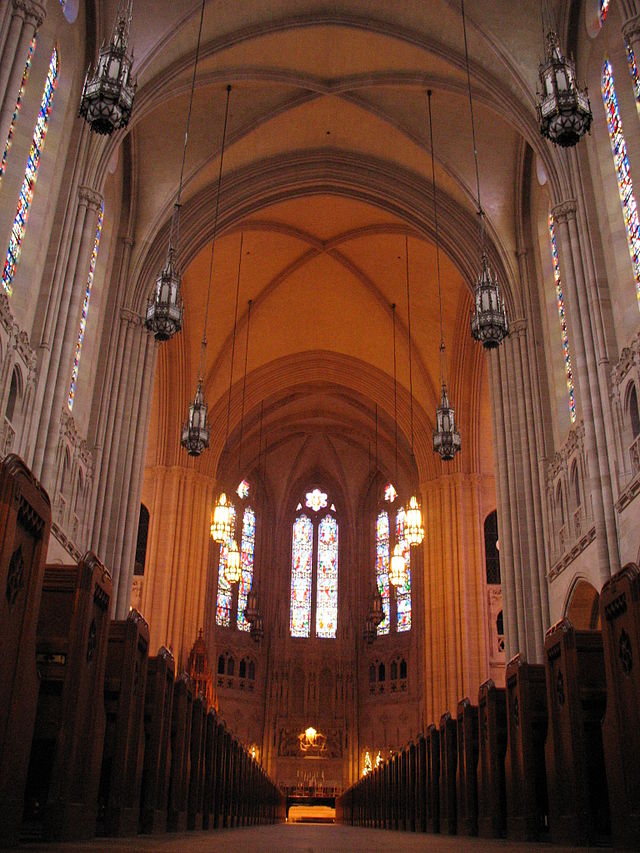History of the Fire Escape
The regal, gothic East Libertarian Presbyterian Church is known to older neighborhood wags by another name: “Mellon’s Fire Escape.”
Richard King Mellon’s family paid for the construction of the cathedral, also known as the Cathedral of Hope and the ELPC, on the condition he and his wife could be entombed within. And so they are, in a gloomy chamber adjacent to the cathedral proper.
Like his contemporaries, such as Henry C. Frick and Andrew Carnegie, Mellon made a fortune in banking by steamrolling competitors and driving many hard bargains. His bank backed companies that some say created crushing conditions for laborers.
Mellon invested in his first coal property and real estate, both of which doubled in value during the 1860s, so much that he was able to open T. Mellon & Sons, a bank known today as BNY Mellon.
The Mellons had eight children, with Andrew and Richard being the most famous. Both brothers eventually founded the Mellon Institute of Industrial Research in memory of their father in 1913. In 1967, it became part of Carnegie-Mellon University.
Richard Mellon served under Andrew at the Aluminum Company of America and invested in the Pittsburgh Coal Company, known today as CONSOL Energy. He is also credited with developing land into an amusement park in 1931, known as Idlewild Park.
Construction on the Cathedral began on Aug. 18, 1931 and Richard Mellon placed the cornerstone on June 19, 1932. The project was completed on May 12, 1935.
The Gothic style masterpiece features classic pointed arches, multi-colored stained glass windows and a cruciform or cross-style floor plan. The layout is designed to be a cross on lying on its side. It is 202 feet from the top to the bottom, with transepts breadth, or width, of 117 feet. It stands at 75 feet high.
Richard and his wife Jennie spent about $4 million on the ELPC, the equivalent of $66 million today. And, as was nearing the end of his life, some wondered if his celestial philanthropy was a salve for his guilt or a get-out-of-hell free card. In fact, he died two years before the cathedral was completed, with the Trinity Chapel reserved as the final resting place for Richard and Jennie.
“Local wags called it the Mellon’s ‘fire escape,’ as though a church might save the family from a heated afterlife,” historian and architecture critic Charles Rosenblum says.

